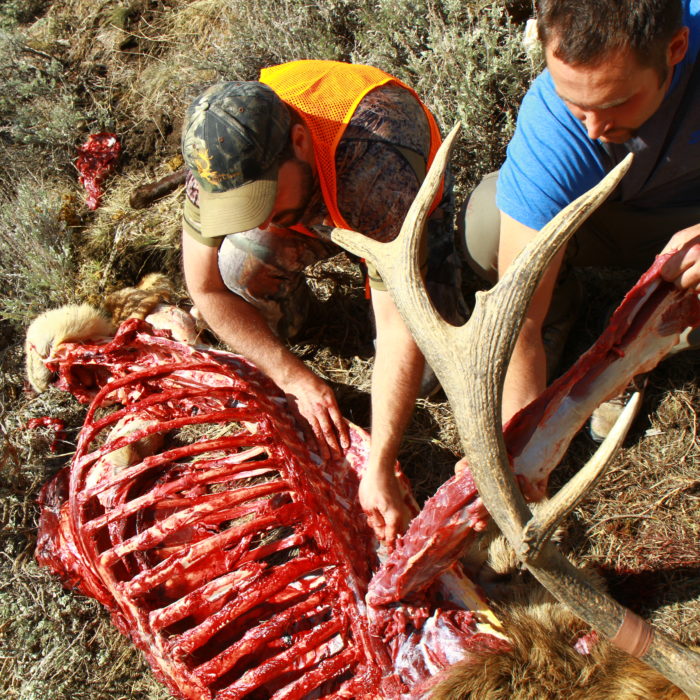
NOTICE: Certain links on this post may earn a commission for Western Hunter Magazine from Amazon or our other affiliate partners when you make a purchase. Thank you for your support.
Meat from a Bull Elk

For this installment of Field Judging, I thought I’d go a bit of a different direction than our normal “How much does it score?”. Instead, how about “How much does it weigh?”
There are few things that can start an argument among western hunters as fast as how much meat they got off of an animal. Numbers get thrown about of mythical proportions, and more than a little bit of snickering can be had at the expense of a tale-teller who gets a bit carried away.
I’ve seen this appear on numerous social media threads recently and have to admit, I’ve snickered more than once myself. The mythical 500 lbs. of pure meat off of an elk is right up there with the greatest of hunting’s statistical “legends”.
I shared this once 12 years ago in my book, Idaho’s Greatest Elk, but it appears time to break it out again as a refresher for our older crowd and a crash course for our younger ones.

An average hindquarter – more than packable for most Western hunters.
This study was originally done in Wyoming in 1973 to attempt to answer this question definitively. The study (R.A. Field, F.C Smith, and W.G. Hepworth.1973b. The Elk Carcass. Bull.594. Univ. Wyoming Ag. Exp. Sta., Laramie. 6 pp.) very carefully weighed a freshly killed bull elk at every stage, from on the ground before any processing, all the way through to retail cuts.
From this study, some easy rules of thumb can be used. First, field-dressed weight is roughly two-thirds of the total body weight. Second, the cleaned dressed weight (hide, forelegs, head removed) was just over 50% of the live weight. Therefore, one can roughly double the skinned, field-dressed carcass to get a very close estimate of live weight. Third, the live weight would be equitable to roughly three times the weight of your processed meat, assuming little to no harvest damage. So, 500 lbs. of meat would roughly require a 1500-lb. elk.
The only thing that might not apply to most hunters is that they did the final cuts “bone in”. Thus, dropping that percentage from 35% to a slightly smaller number – say 30-33% - might be applicable.

In order to achieve the percentages and numbers represented in the study, one would have to remove all reasonably edible portions, as the author did here.
As you can see, a large 770-lb. elk, which would be a larger-than-average mature bull in the Rockies, yielded around 270 lbs. of meat. You can add more for larger-bodied Roosevelt elk on the coast and subtract for a semi-mature raghorn, but this well-documented official study is a great baseline for the realities of what to expect when you pick up your boxes of frozen meat from your meat-cutter or when you’re all finished at home.
Weight Conversions for a 770-lb. Bull Elk
|
Component |
Weight (in pounds) |
Proportion of Live Weight |
|
Live weight |
770 |
1.00 |
|
Bled weight |
750 |
0.97 |
|
Field-dressed weight (no viscera or forelegs) |
503 |
.65 |
|
Clean dressed weight (no head or hide) |
417 |
.54 |
|
Retail cuts (bone in) |
269 |
.35 |




